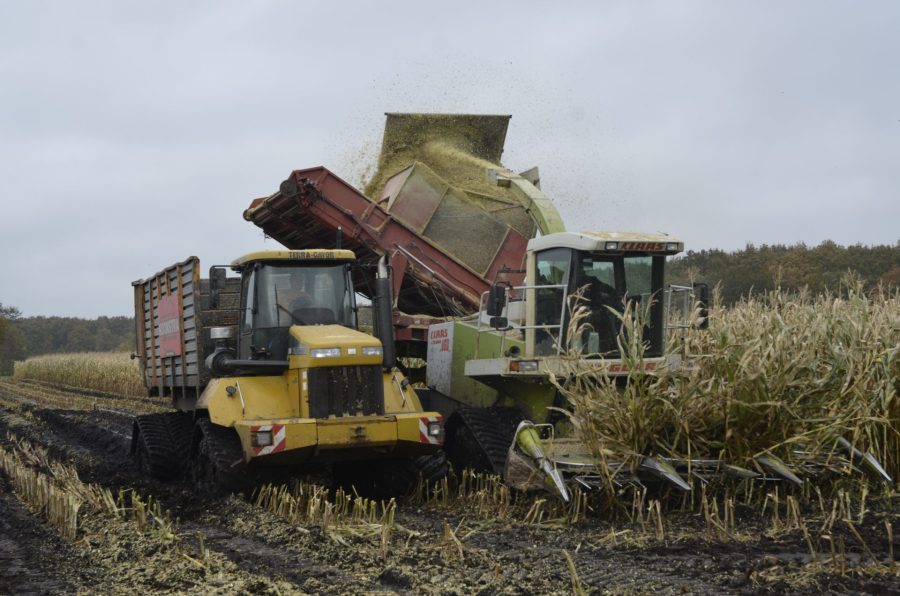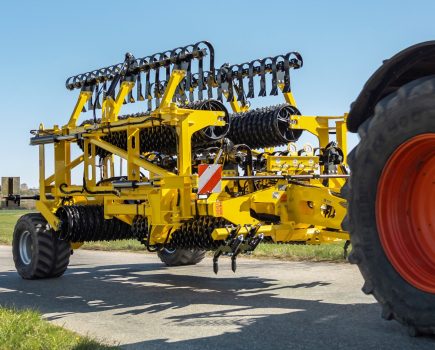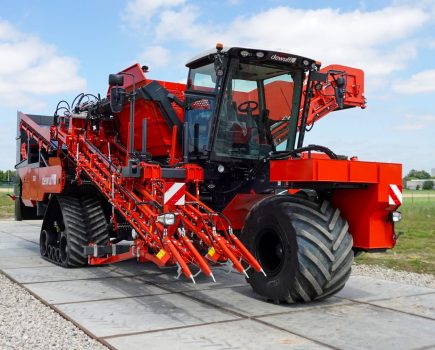It is possibly too late to save this season, but this Claas Jaguar and AgChem Terra-Gator could provide the next owner with a back-up in the event of another wet maize harvest. Both machines are for sale.
The two rubber tracked machines belong to Dutch contractor Koonstra and having seen both in action, we know a little bit about them. The base for a self-propelled maize trailer is a 2001-built rubber-tracked 2104.
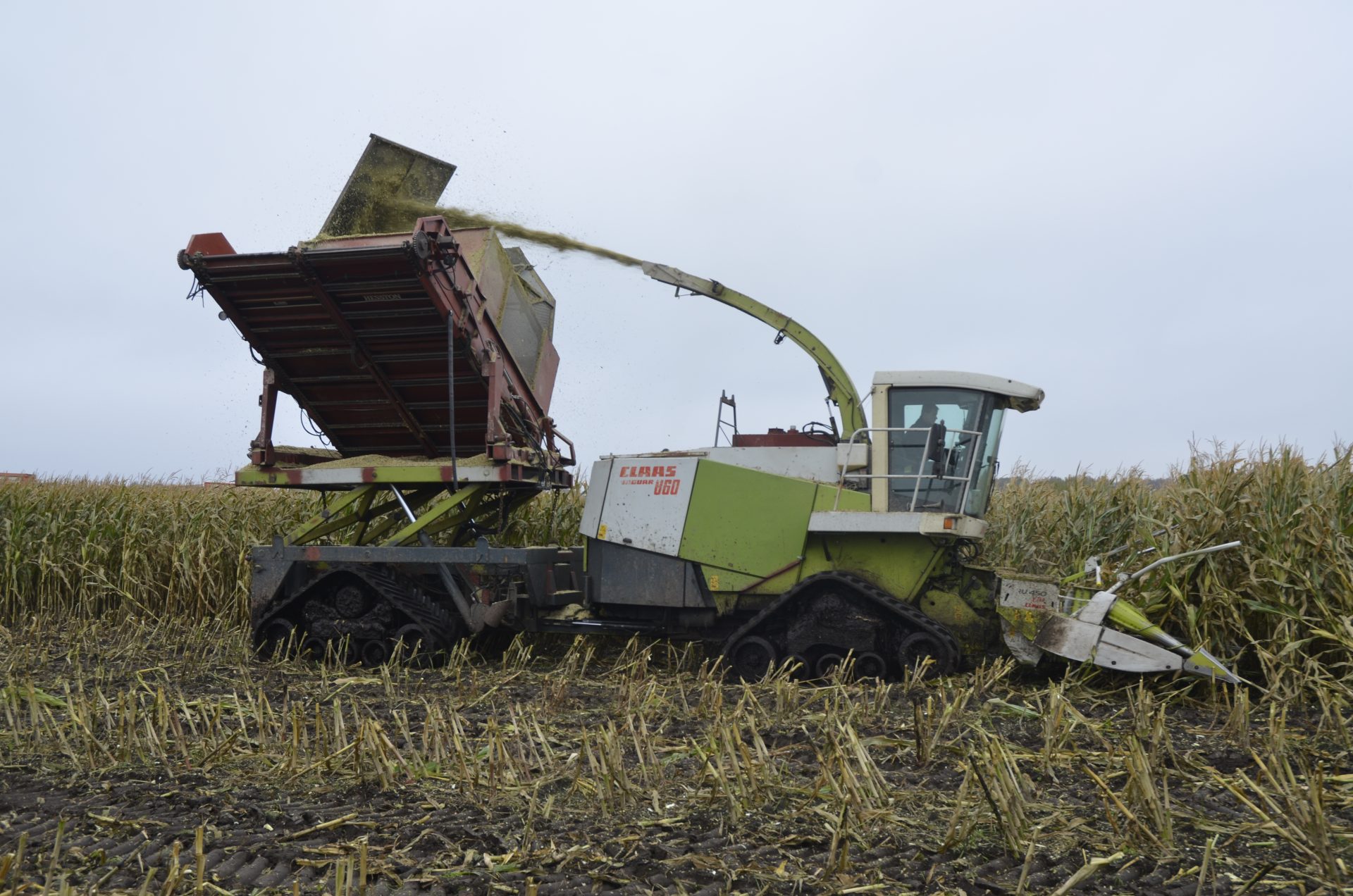
The header is a six-row RU450 Xtra. The bunker was gleaned from a scrapped Hesston 7730. It allows the Jag to keep working while the Terra-Gator is away.
With its skip removed, Koonstra mechanics cut the machine in half behind the articulation point and extended the chassis by half a metre to make room for the top half of a 14t Veenhuis silage trailer.
New hydraulics and lift rams were added, and the scissor arrangement raised the trailer body to a maximum unloading height of 4.5m – plenty high enough to empty over trailer sides.
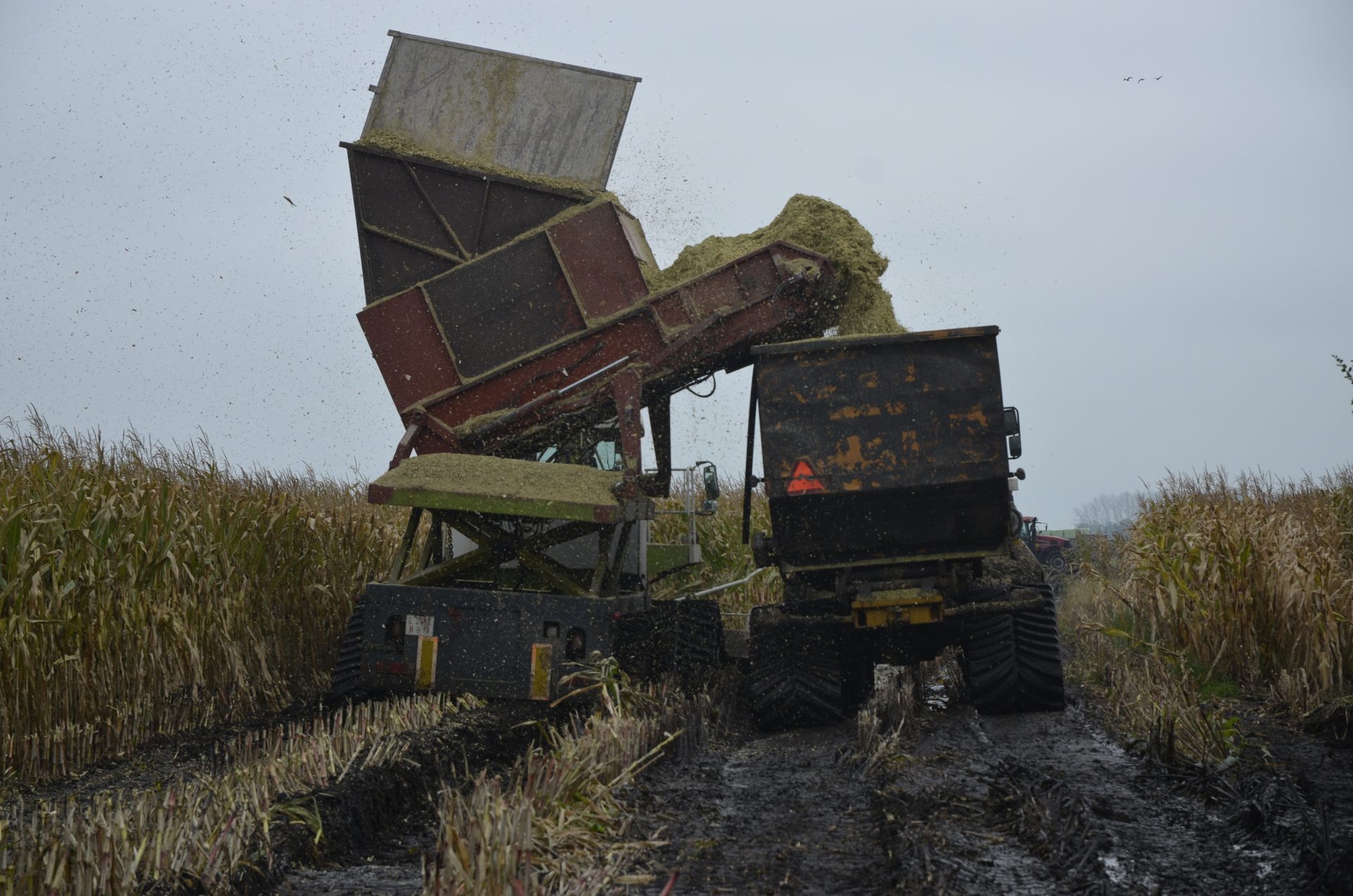
The four tracks demand 200hp from the 435hp Mercedes-Benz V-8 block. The engine is stretched to the limit when working in a tough spot and emptying the bunker on-the-move.
The modified Jag (870 with its front wheels swapped for tracks) and Gator worked well (profi 1/2018). The big drawback, though, was that the forage harvester had to stop while the self-propelled trailer was away unloading its contents.
The Claas forager needed to be able to work non-stop to improve efficiency. Not keen to add another TG to the mix, the Dutch contractor quickly concluded that the harvester needed to tow a trailer. After mulling over a few ideas, they bought a 1995-made Claas 860 bunker version, which in its previous life ran on tyres and worked in Spain.
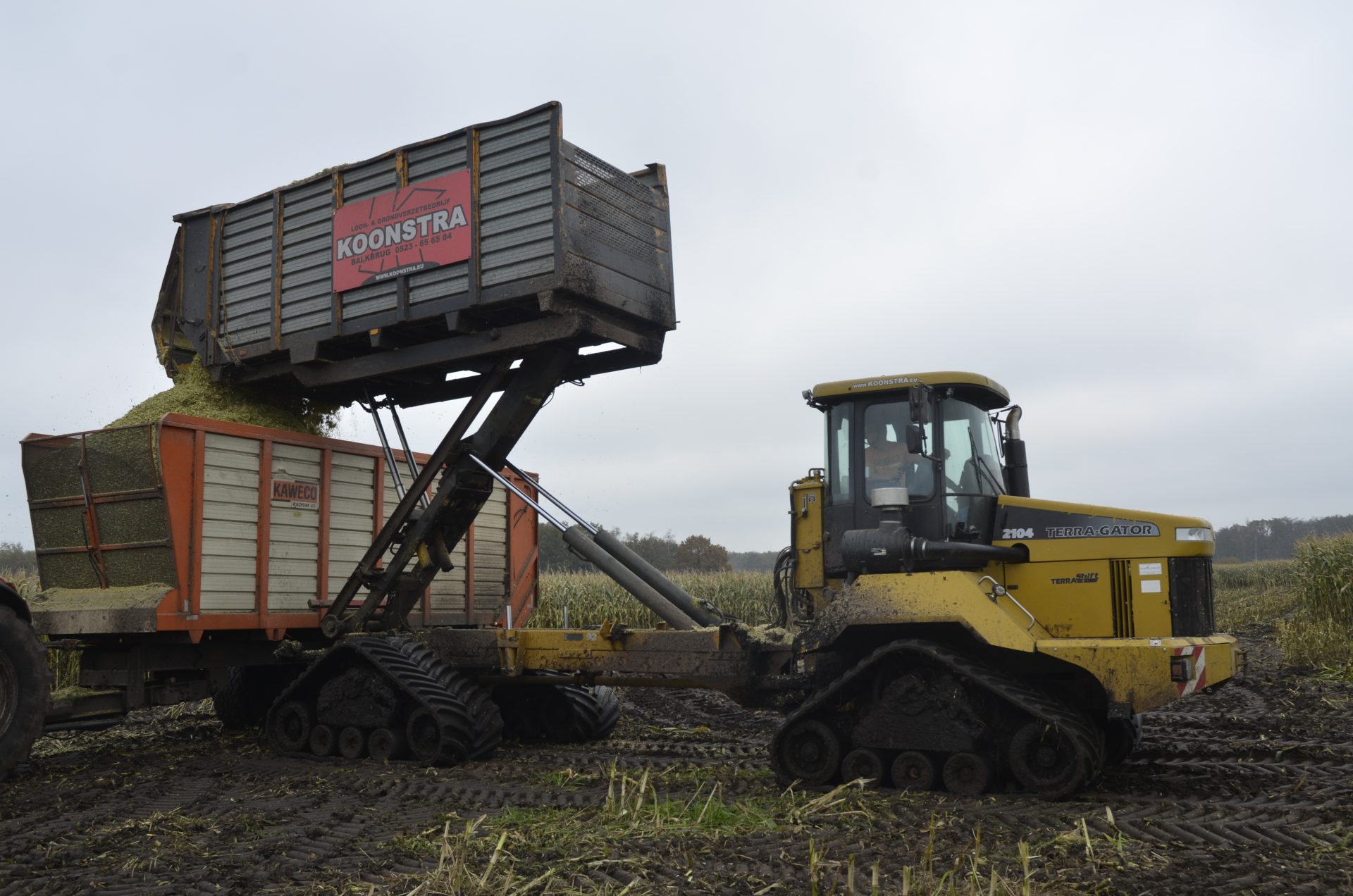
The Dutch contractor swapped the earthmoving skip on 2001-built rubber-tracked 2104 for the top half of a Veenhuis silage trailer. The TG’s 18-20m³ body is plenty large enough to accommodate the 15.0m³ of maize from the Jag’s bunker. The bunker lifts to an unloading height of 4.5m.
Trucked to Koonstra’s base at Balkbrug in the east of the Netherlands, one of the first jobs for the contractor’s capable mechanics was to remove the 860’s front wheels, position the front axle further back and reduce the size of the fuel tank. These changes provided the space necessary for the Grecav rubber track units and 90cm-wide belts.
The attention then turned to the rear half of machine. The rear axle and track units (made by Dutch company Westtrack) are from what used to be a gigantic self-propelled flower bulb cleaning machine called the Earth Eater.

Outputs drop when the going gets severely tough, when we saw it the forager it was averaging around 2ha/hr.
The bunker the 860 used to work with unloaded its contents to the rear and was not suitable for emptying to on-the-move to the side in Dutch maize. This was replaced with one from a scrapped Hesston 7730. The original plan was to paint it in Claas colours, but this will be a job for the new owner.
After three winters in the workshop, the modified harvester successfully completed its first serious field tests in the wet autumn of 2021, which is when we caught up with it (profi 05/2022).
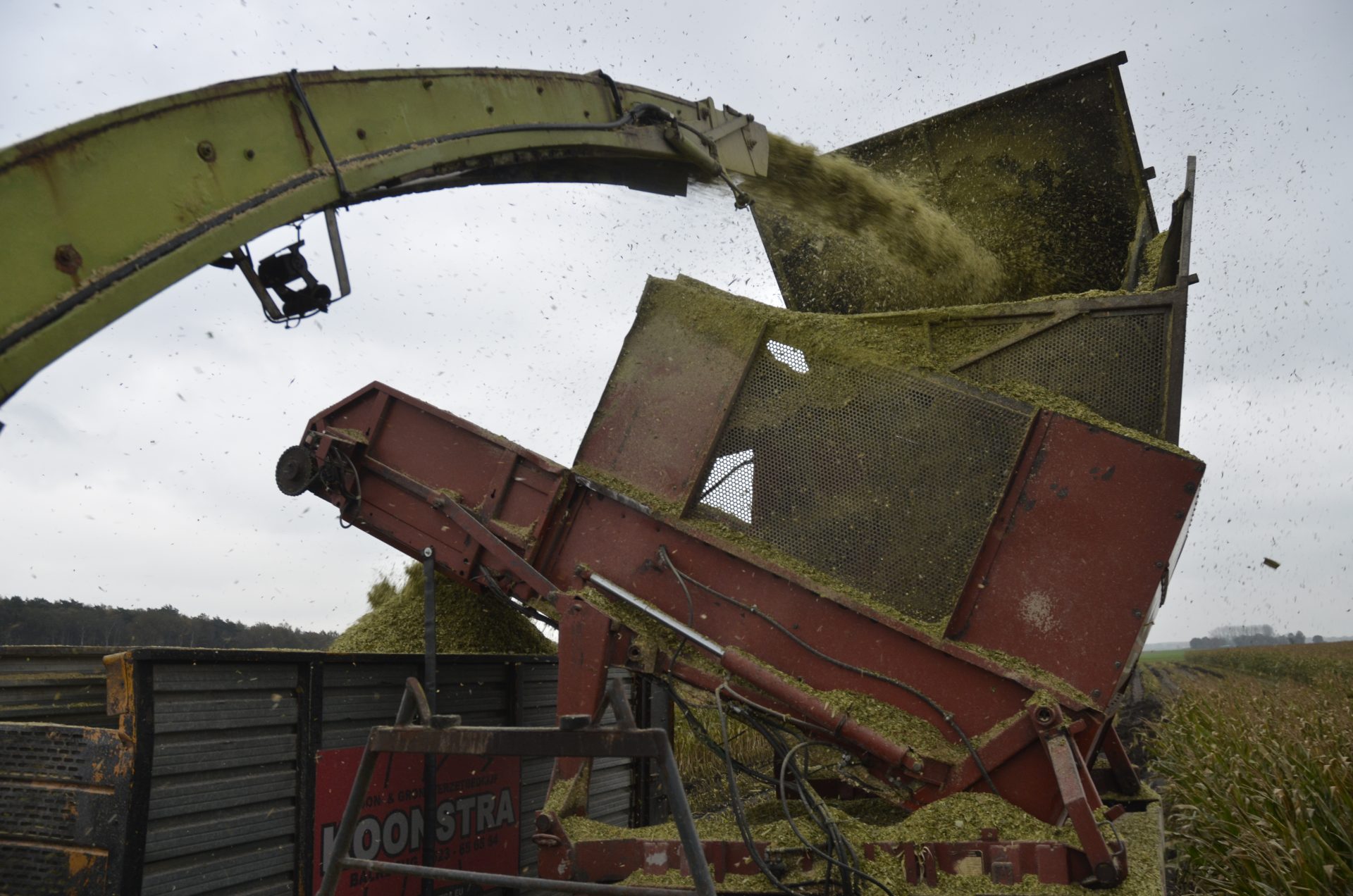
Rubber wear and tear is one reason why the 860 and 2104 never drive on the road. Others include mud and the maximum speed of the front and rear tracks of just 12km/hr (860) and 20km/hr (TG).

Flat out, the Jag drains around 50lit/ha (75lit/hr) of diesel from the smaller fuel tank. Containing roughly two thirds of the capacity of the standard 860-litre version, it needs replenishing every nine hours.

Described as technically perfect, we can confirm that the unusual combination is formidable in the wet, chopping and removing maize in some of the worst conditions imaginable. So, why has the Dutch contractor decided to part with the two rubber tracked machines?
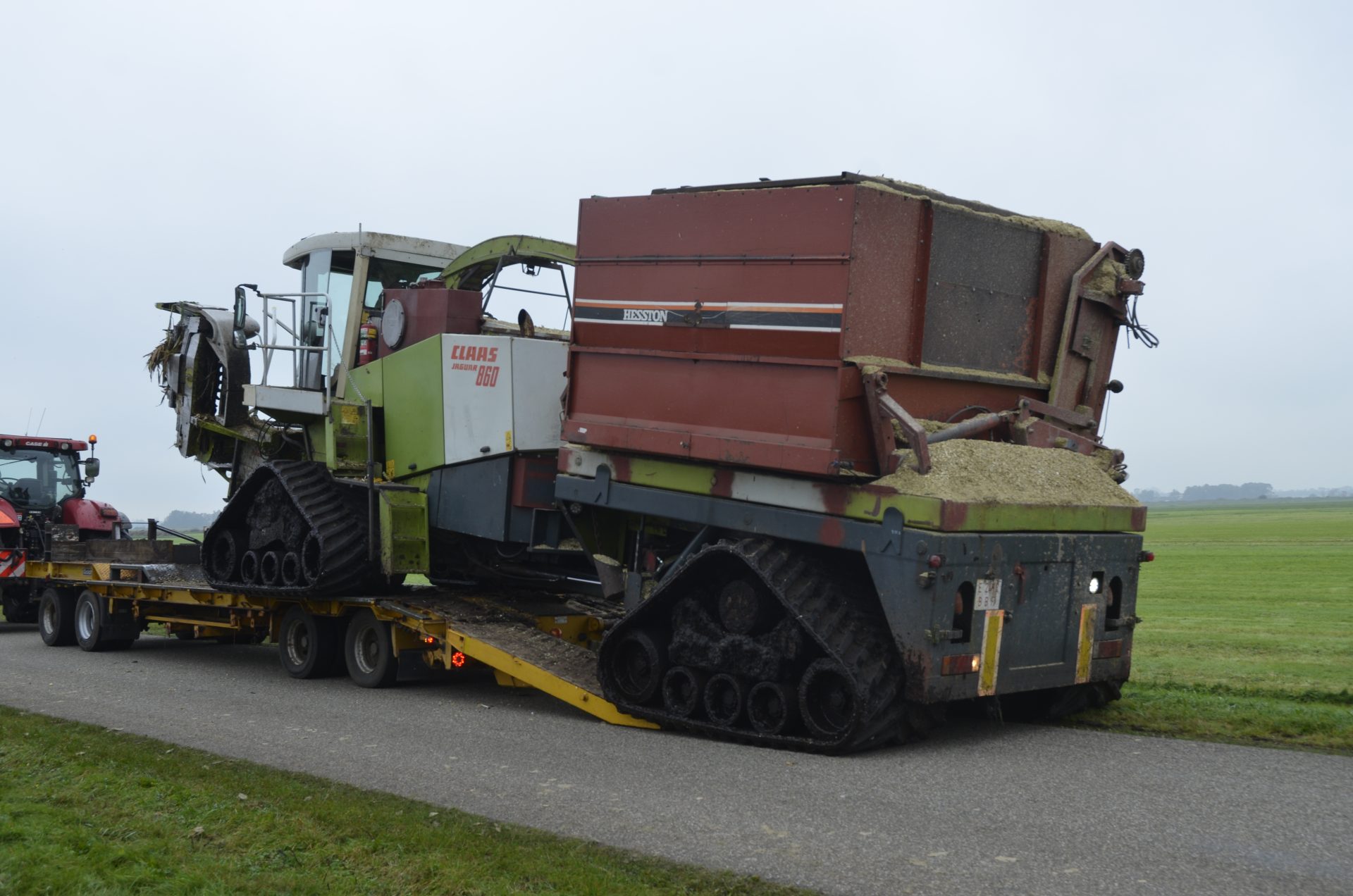
Trucking the Claas forager from job to job helps reduce the wear and tear on the expensive rubber tracks. The oil tank on the top of the forager is the larger version Claas fitted to the Field Shuttle. This supplies the two drive motors for the front and rear axles.
This is because of the struggle to find drivers for grass and maize silage work, so Koonstra has wound down both activities to focus on general farm duties, earthmoving and demolition.
The price of the Claas forage harvester, 6,000-hour Terragator and two trailers to transport them on is €225,000, plus VAT.
For more up-to-date farming news click here and subscribe now to profi and save 47%.

